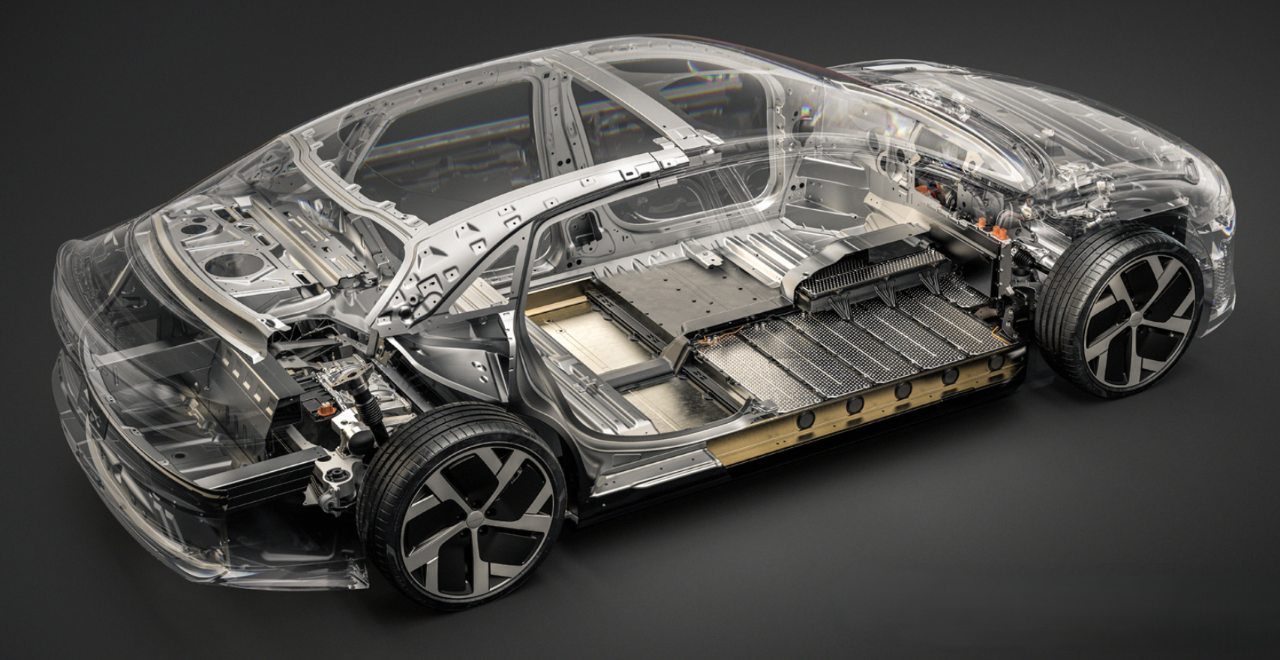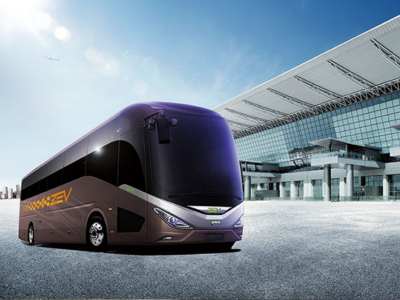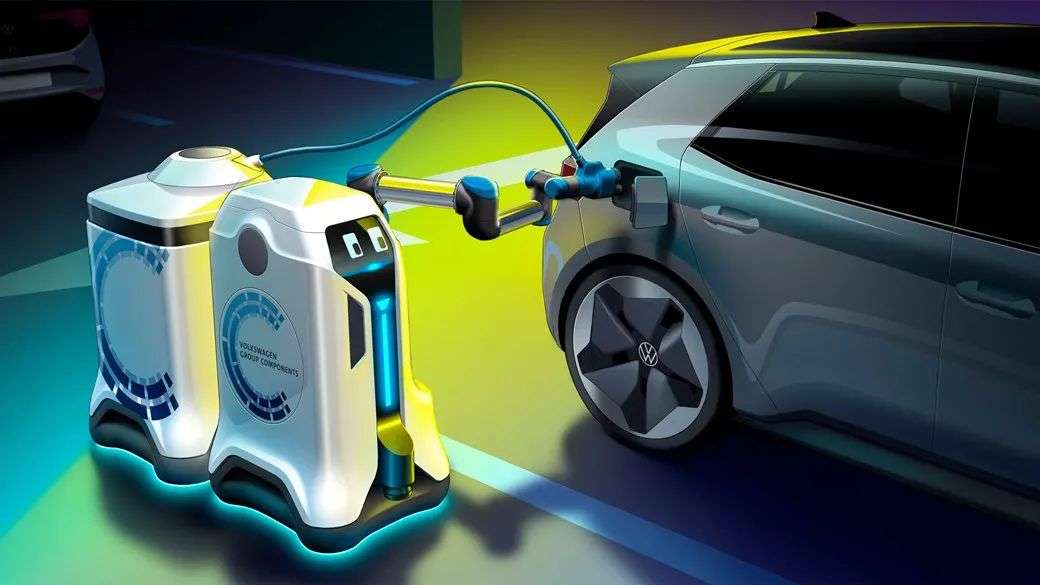The Role of Electric Vehicle Control Systems in Autonomous Driving
As the automotive industry pivots toward sustainable and autonomous solutions, electric vehicles (EVs) have emerged as a frontrunner in this transformation. Central to the effectiveness of these vehicles is the electric vehicle control system, which orchestrates the intricate dance between hardware and software to ensure optimal performance, safety, and user experience. This blog delves into the crucial role of electric vehicle control systems in autonomous driving, exploring how they integrate various technologies and what this means for the future of transportation.
Understanding Electric Vehicle Control Systems
Electric vehicle control systems encompass a range of technologies that manage the vehicle’s operation. At the heart of this system is the electric car controller, which acts as the brain of the EV, processing data from various sensors and executing commands to optimize performance. In autonomous electric vehicles, the electric car controller plays a critical role by processing data from multiple sensors to make instantaneous driving decisions.
Key Components of EV Control Systems
The functionality of an electric vehicle control system relies on several key components, each playing a vital role in the overall operation of the vehicle. Understanding these components can illuminate how they work together to enable autonomous driving capabilities.
Power Electronics: Power electronics refers to the technology that deals with the conversion, control, and management of electrical power using electronic devices. In the context of electric vehicle (EV) control systems, power electronics play a crucial role in efficiently converting and controlling electrical energy from the battery to drive the electric motor, manage auxiliary systems, and optimize overall vehicle performance.
It consists of the following main components:
- Power Source - Provides the input power that could be AC or DC.
- Power Electronic Converter - Acts as the heart of the system and contains semiconductor switches that efficiently convert and process input power.
- Load - Consumes the converted output power and can be devices like motors, batteries etc.
- Sensors - Provide feedback on load conditions like current, voltage etc.
- Controller - Monitors feedback, compares it with reference and controls converter switches accordingly.
Sensors: These include a variety of devices such as LiDAR, cameras, and radar, which provide real-time data about the vehicle’s environment, helping it to navigate safely. LiDAR uses laser beams to create a 3D map of the surroundings, while cameras capture visual information that can be processed to identify obstacles, lane markings, and traffic signs. Radar systems, on the other hand, are excellent for detecting objects at long distances and in various weather conditions, complementing the data provided by other sensors. Together, these sensors form a comprehensive perception system that enables the vehicle to understand its environment.
Software Algorithms: Advanced algorithms analyze data from sensors and execute control commands, enabling features like adaptive cruise control, lane-keeping assist, and more. These algorithms utilize artificial intelligence and machine learning techniques to improve their performance over time. By learning from past experiences and real-world data, the control system can refine its decision-making processes, resulting in more accurate and reliable vehicle responses.
Communication Interfaces: These interfaces enable the control system to communicate with other vehicle systems and external infrastructure, crucial for features like vehicle-to-vehicle (V2V) and vehicle-to-infrastructure (V2I) communications. Effective communication is essential for ensuring that the vehicle can respond to changes in its environment in real time, such as adjusting speed based on nearby vehicles or responding to traffic signal changes.
The major types of Communication Interfaces:
1. Controller Area Network (CAN)
2. Local Area Network (LAN)
3. FlexRay
4. Controller Area Network with Flexible Data Rate (CAN FD)
5. Ethernet
6. Bluetooth
7. Wi-Fi
8. Zigbee and Other Low-Power Protocols
9. Vehicle-to-Vehicle (V2V) and Vehicle-to-Infrastructure (V2I) Communication

The Importance of EV Control Systems in Autonomous Driving
1. Real-Time Decision Making
For an electric vehicle to navigate autonomously, it must make split-second decisions based on a myriad of factors. The EV control system is designed to process input from various sensors and calculate the best course of action in real time. This capability is vital for functions such as:
- Obstacle Detection: Identifying and responding to pedestrians, cyclists, and other vehicles in the vicinity is crucial for safety. The control system analyzes sensor data to recognize objects and assess their distance, speed, and trajectory, allowing the vehicle to react appropriately, whether that means stopping, slowing down, or changing lanes.
- Traffic Management: The ability to adjust speed and direction based on traffic conditions, such as stop signs, traffic lights, and other vehicles, is essential for seamless navigation. The control system uses predictive algorithms to anticipate traffic flow and make informed decisions, improving not only the safety of the vehicle but also the efficiency of the overall traffic system.
2. Enhanced Safety Features
The integration of advanced safety features is one of the most significant advantages of electric vehicle control systems. The electric vehicle control system employs predictive algorithms to anticipate potential hazards and respond proactively. Some key safety features include:
- Automatic Emergency Braking (AEB): This feature uses data from sensors to detect imminent collisions and applies the brakes autonomously if necessary. The control system continuously monitors the vehicle's surroundings, allowing it to react faster than a human driver could in critical situations.
- Lane Departure Warning and Assistance: The control system monitors lane markings and alerts the driver or takes corrective actions if the vehicle drifts out of its lane. By providing visual and auditory alerts, or even steering inputs, the system helps prevent accidents caused by driver inattention or fatigue.
- Adaptive Cruise Control (ACC): This feature adjusts the vehicle's speed to maintain a safe following distance from the vehicle ahead. By constantly analyzing traffic patterns and responding accordingly, the EV control system ensures a smoother driving experience.
3. Optimized Energy Management
Electric vehicles rely on efficient energy management to maximize range and performance. The electric car controller optimizes power distribution among various components, including the motor, battery, and regenerative braking systems. Engineers are constantly working to enhance the reliability and efficiency of the electric car controller to extend the range of electric vehicles. This is especially important in autonomous driving, where maintaining an optimal balance between performance and energy efficiency is crucial.
- Regenerative Braking: During braking, the control system recovers kinetic energy and redirects it back to the battery, extending the vehicle's range. By intelligently managing the transition between regenerative and friction braking, the control system ensures a seamless driving experience while maximizing energy recovery.
- Adaptive Energy Management: By analyzing driving patterns and conditions, the system can adjust power usage to improve efficiency. For instance, if the vehicle detects that it is in a stop-and-go traffic situation, it can adjust its energy consumption strategy to prioritize battery life over performance, extending the driving range.
4. Vehicle-to-Everything (V2X) Communication
The future of autonomous driving hinges on the ability of vehicles to communicate with one another and with surrounding infrastructure. The EV control system plays a pivotal role in facilitating this communication, which enhances situational awareness and decision-making capabilities.
- Traffic Signal Prediction: By communicating with traffic signals, the vehicle can anticipate changes in light status and adjust speed accordingly, reducing stop-and-go driving. This capability not only improves the efficiency of individual vehicles but can also contribute to overall traffic flow optimization.
- Cooperative Maneuvering: Vehicles can share information about their intentions, enabling smoother traffic flow and reducing the likelihood of accidents. For example, if one vehicle intends to merge into a lane, it can notify other nearby vehicles, allowing them to adjust their speeds and positions to accommodate the maneuver safely.
- Real-Time Traffic Updates: Through V2X communication, vehicles can receive updates about traffic conditions, road closures, and accidents, allowing them to reroute or adjust their driving strategies proactively.

Challenges in Implementing EV Control Systems
Despite the advancements in electric vehicle control systems, several challenges remain:
- Data Security: As vehicles become more connected, the risk of cyber-attacks increases. Ensuring the integrity of communication between vehicles and infrastructure is paramount. Manufacturers must implement robust cybersecurity measures to protect sensitive data and prevent unauthorized access to vehicle systems.
- Regulatory Compliance: Different regions have varying regulations governing autonomous driving technologies, complicating the deployment of EV control systems on a global scale. Manufacturers must navigate a complex landscape of legal requirements, testing standards, and safety protocols to ensure compliance while advancing their technologies.
- Technological Standardization: The lack of standardized protocols for V2X communication can hinder interoperability among different manufacturers’ vehicles and infrastructure. Developing industry-wide standards will be crucial for enabling seamless communication and collaboration between various systems and devices.
- Public Acceptance: As autonomous vehicles become more prevalent, addressing public concerns about safety, privacy, and trust in the technology will be essential. Manufacturers and policymakers must work together to educate consumers about the benefits and safety measures in place to alleviate fears surrounding autonomous driving.
The Future of Electric Vehicle Control Systems
Looking ahead, the role of electric vehicle control systems in autonomous driving will only grow. With continuous advancements in AI, sensor technology, and power management systems, we can expect:
- Improved Autonomous Capabilities: Future systems will enhance the ability to navigate complex environments autonomously, including urban areas with unpredictable obstacles. The integration of advanced AI will allow vehicles to learn from their experiences, improving their decision-making processes over time.
- Greater Integration with Smart Cities: As urban infrastructure becomes smarter, electric vehicle control systems will play a critical role in optimizing traffic flow and reducing congestion. By communicating with smart traffic lights, public transportation systems, and other connected devices, EVs can contribute to a more efficient and sustainable urban environment.
- Sustainability Initiatives: The push for greener transportation solutions will drive innovation in electric vehicle control systems, focusing on maximizing energy efficiency and minimizing environmental impact. Research into new battery technologies, alternative materials, and enhanced recycling processes will support the transition to a more sustainable automotive industry.
- Enhanced User Experience: As EV control systems evolve, they will increasingly focus on enhancing the user experience. This includes features such as personalized driving modes, improved connectivity with smart devices, and more intuitive interfaces that allow drivers to engage with the technology seamlessly.
Conclusion
The electric vehicle control system is a linchpin in the quest for autonomous driving. By enabling real-time decision-making, enhancing safety, optimizing energy management, and facilitating communication, these systems are not just improving the performance of electric vehicles; they are redefining the very nature of transportation. As we continue to innovate and address the challenges ahead, the future of electric vehicles—and indeed, the future of mobility—will be brighter and more sustainable than ever.
In this rapidly evolving landscape, understanding the nuances of the electric vehicle control system is crucial for both consumers and industry stakeholders alike, paving the way for a new era of transportation that is safe, efficient, and environmentally friendly. The integration of electric vehicle control systems into everyday life promises to revolutionize not just how we drive, but how we perceive and interact with the world around us.































